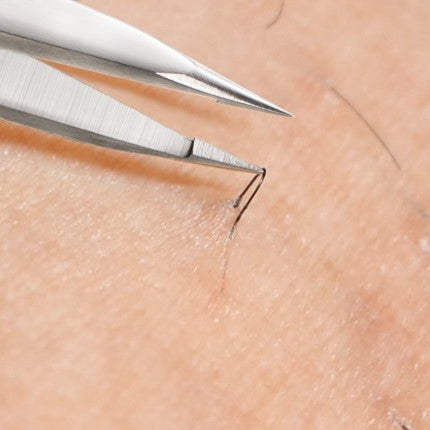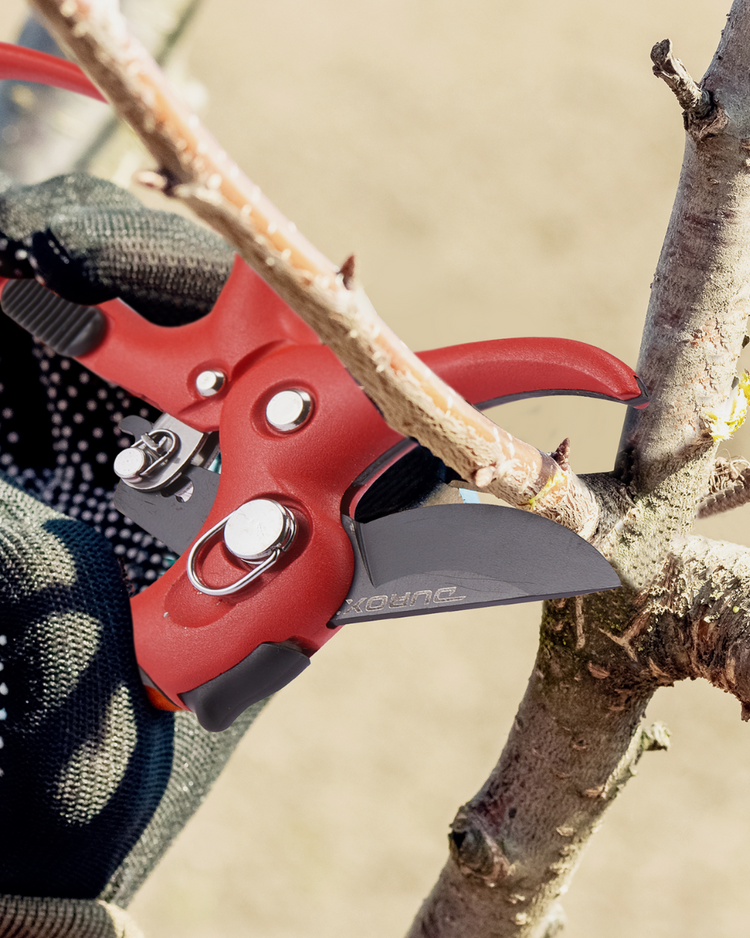
How to Remove Ingrown Hairs Effectively with Pointed Tweezers
How to Get Rid of Ingrown Hair with Pointed Tweezers?
Ingrown hairs can be painful and frustrating, often resulting from hair removal methods like shaving, tweezing, or waxing. Using pointed tweezers to remove ingrown hairs is an effective method, but it requires care to avoid further irritation or infection. This guide provides insights into the causes and symptoms of ingrown hairs, common locations, and a detailed, step-by-step process for safely removing them with DUROX pointed tweezers.
What Triggers Ingrown Hairs?
Ingrown hairs occur when hair that has been removed starts to grow back and curls into the skin. This can happen after shaving, tweezing, or waxing, causing tiny, painful bumps on the skin. People with curly hair are more prone to ingrown hairs because curly hair tends to grow in non-linear directions. Areas with thicker hair, like the beard or bikini area, are particularly susceptible.
Symptoms of Ingrown Hairs
The symptoms of ingrown hairs can vary depending on the severity and location, but they generally include:
-
Small, Swollen Bumps:
These bumps, often resembling pimples, appear in areas where hair has been removed.
-
Pus-Filled Bumps:
Infected ingrown hairs can form pustules, which are small, inflamed blisters filled with pus.
-
Hyperpigmentation:
The skin around the ingrown hair may appear darker than the surrounding skin due to inflammation.
-
Burning or Stinging Sensation:
The affected area can feel itchy, tender, and sometimes painful.
-
Visible Hair Loop:
You might see a hair trapped under the skin's surface.
-
Red Bumps:
These can increase in size if the ingrown hair becomes infected.
-
Tenderness and Discomfort:
The area around the ingrown hair can be sore to the touch.
Common Locations of Ingrown Hairs
-
Face and Neck:
Men often experience ingrown hairs in the beard area, including the neck, jawline, and cheeks, especially after shaving. For strategies on reducing this irritation, read our article on "Shaving Strategically to Prevent Ingrown Hairs". This guide offers detailed steps and techniques to enhance your shaving routine and prevent ingrown hairs.
-
Armpits:
Shaving or waxing the underarms can lead to ingrown hairs in this sensitive area.
-
Pubic Area:
Both men and women can develop ingrown hairs in the pubic region due to shaving, waxing, or tight clothing.
-
Legs:
Women who shave or wax their legs are prone to developing ingrown hairs.
-
Buttocks:
Ingrown hairs can occur on the buttocks, particularly in areas that experience friction from tight clothing.
-
Thighs:
The inner thighs, which often experience friction, can develop ingrown hairs, especially in individuals with coarse hair.
Causes of Ingrown Hairs
-
Hair Removal Methods:
Shaving, waxing, and tweezing can leave hair with sharp tips that easily re-enter the skin. Improper or aggressive shaving, waxing, or tweezing increases the likelihood of ingrown hairs.

-
Curly or Coarse Hair:
Curly or coarse hair is more likely to grow back into the skin. People with these hair types, such as people of African, Hispanic, and Middle Eastern descent, are more likely to develop ingrown hairs.
-
Clogged Follicles Due to Dead Skin Cells:
Dead skin cells and debris can block hair follicles, causing hair to grow inward or sideways.
-
Improper Shaving Techniques:
Pulling the skin tight or shaving too close increases the risk of ingrown hairs. Discover how to refine your shaving approach and reduce these risks by reading our article, "Prevent Ingrown Hairs with Expert Shaving Tips". This guide provides expert advice on proper shaving techniques to help you achieve smoother skin.
-
Tight Clothing:
Wearing tight clothing can irritate the skin and encourage hair to grow sideways.
"By understanding the causes, symptoms, and common locations of ingrown hairs, you can take proactive steps to manage and prevent this common skin condition, ensuring smoother and healthier skin. For more insights, explore our article on "Effective Tips to Prevent Ingrown Hairs" to learn practical strategies that help maintain clear skin."
Steps to Remove Ingrown Hairs with DUROX Pointed Tweezers
Dealing with ingrown hairs can be frustrating and uncomfortable. Using tweezers to remove them is a common and effective method, but it requires care to avoid further irritation or infection. Here’s a step-by-step guide to safely remove ingrown hairs with DUROX pointed tweezers, along with the pros and cons of plucking the hair versus just releasing it.
1. Clean the Skin:
Clean the affected area with warm, soapy water to remove any dirt and reduce the risk of infection. The warm water will also soften the skin and open your pores, making it easier for the ingrown hair to emerge.
2. Apply Warm Compresses:
Place a warm, damp cloth on the affected area to soothe and soften the skin. This helps open your pores and encourages the ingrown hair to rise to the surface, which is especially beneficial for those with sensitive skin.
3. Exfoliate:
Gently exfoliate the skin with a soft brush or mild scrub to remove dead skin cells and help the ingrown hair emerge.
-
- Gentle Techniques: You can also gently rub a wet washcloth or a soft toothbrush in a circular motion over the skin to encourage the hair to emerge.

4. Gently Pull Out the Hair:
Once the hair is near the surface, use sterilized pointed tweezers to gently lift it.
-
Steps to Follow:
- Sterilize the needle and tweezers with an antiseptic.
- Gently break the skin surface with the tweezers’ pointed tips.
- Approach the hair from the side and lift it with the tweezers.
- You can either use the tweezers to carefully pluck the hair and remove it or just release the hair from the skin
- Re-sterilize the tools after use.
5. Avoid Digging into the Skin:
Never dig into your skin to release the hair, as this can lead to infection and further irritation.
6. Clean the Skin:
After removing the ingrown hair, wash the skin again with warm, soapy water and pat it dry. Keep the skin clean to prevent infection.
7. Seek Medical Help if Needed:
If home remedies don’t work or the area becomes infected, consult a doctor who can safely remove the ingrown hair.
Plucking vs. Releasing Ingrown Hairs
Plucking the Hair:
- Pros: Completely removes the ingrown hair, making your skin look smoother and more aesthetically pleasing.
- Cons: Can cause irritation or trauma to the skin. If not done carefully, it may lead to infection or the hair becoming ingrown again if the area heals over the hair.
Releasing the Hair:
- Pros: Less traumatic to the skin, reduces the risk of infection, and allows the hair to grow naturally.
- Cons: The hair remains visible, which may not look as good as completely removing it.
Conclusion
By understanding what triggers ingrown hairs and following proper removal techniques, you can effectively manage and prevent this common issue. Regular skin care, including exfoliation and hydration, combined with careful hair removal practices, will help you maintain smoother, healthier skin. Whether you choose to pluck the ingrown hair or simply release it, these guidelines will assist you in reducing discomfort and achieving the best results.
Explore Our In-Depth Guides for Effective Ingrown Hair Management
Effective Tips to Prevent Ingrown Hairs
Remove Ingrown Hair with Precision: Master Tweezing Techniques

